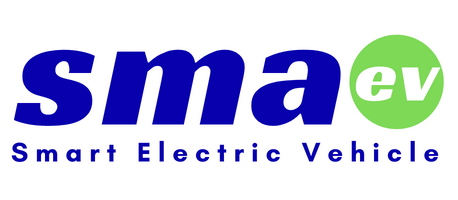Generally speaking, charging applications can be divided into two main categories: low power and high power charging. Low power is usually applied to small consumer electronic devices, such as cell phones, handheld or mobile 3C devices, which are often charged with less than 100 watts of power. High power charging usually refers to charging batteries at power levels higher than 1 kW. The majority of high power charging applications are in the electric vehicle sector, where the power levels range from approximately 1 kW to 300 kW or higher. Charging EV batteries more efficiently and easily has always been an important and critical issue for EVs.
And now there are so many wireless charging devices entering my daily life. These include electric toothbrushes, smart watches and wireless headphones, and floor sweepers. But most people use them to charge their smartphones. Wireless charging has become popular on cell phones in the past few years.
Qi, the first generation of wireless charging had 5 watts of charging capability, and the latest specifications allow for up to 15 watts. Apple eventually adopted Qi wireless charging in its iPhone line, joining Samsung, Google and other Android manufacturers.
Many of us have wireless charging pads on our desks at work or on our nightstands at home. When you have time to charge, it’s convenient to just put the device you need to charge on the charging pad. Although sometimes you may prefer to plug in the quick charge head when you need a quick charge.
Wireless charging technology is the transfer of electrical energy to the device to be charged by means of magnetic field induction or resonance in the air, eliminating the need for annoying wires, and the development of this technology has gradually made people’s lives more convenient. Especially, in the era of Internet of Everything and electric vehicles, wireless charging technology has become more important.
At present, the wireless charging function of common smartphones is designed with a set of transmission induction coils in the charging base and a set of miniature receiving coils embedded in the back of the phone. When the power is fed into the transmission coil at the charging base, the induction magnetic lines are immediately emitted and converted into induction voltage by the receiving coil inside the phone, which is then stepped up to 5 volts by the power regulator circuit for charging the phone. The magnetic field strength and coupling coefficient between the two coils can be enhanced by adding a permeable iron core material between the two induction coils and shielding the metal objects and electronic components from interference. At this stage, the application of wireless charging technology has evolved from low-powered 5-watt cell phones to high-powered kilowatt-class electric vehicles, and has gradually changed people’s habits.
Today, wireless charging technology is being used for the purpose of cutting the cables of all devices from smart phones and laptops to kitchen appliances and cars. Wireless charging is driving growth in the healthcare, automotive and manufacturing industries because it holds the promise of increased mobility and growth, and these advances can enable small Internet of Things (IoT) devices to get power from chargers several feet away.
Benefits of Wireless Charging
- Less risk of electrical failure when connected or disconnected frequently, frequent reconnection for intermittent charging, and no wear and tear on the charging cable or charging socket.
- Relatively more aesthetically pleasing and no cable clutter
- The wireless charging system can automatically charge when the inductive charging distance is reached, without relying on personnel to plug and unplug the power.
- Automatic wireless charging of high-powered electric vehicles allows charging of electric vehicles in motion, theoretically allowing the vehicle to travel indefinitely (dynamic charging).
The common electric vehicle is charged at a fixed point, but if the electric vehicle in motion can be charged dynamically and mobile, it will improve the range of the electric vehicle and solve the problem of insufficient battery storage. The dynamic wireless charging design allows multiple modular primary transmission coils and power conversion devices to be laid on the road, and can independently provide magnetic field induction power with different transmission powers to detect the driving position of the EV. The concept of dynamic charging is expected to strengthen the This dynamic charging concept is expected to enhance the electric vehicle’s magnetic field conversion and charging power, while eliminating the waiting time for spot charging and avoiding the loss of excess energy.






